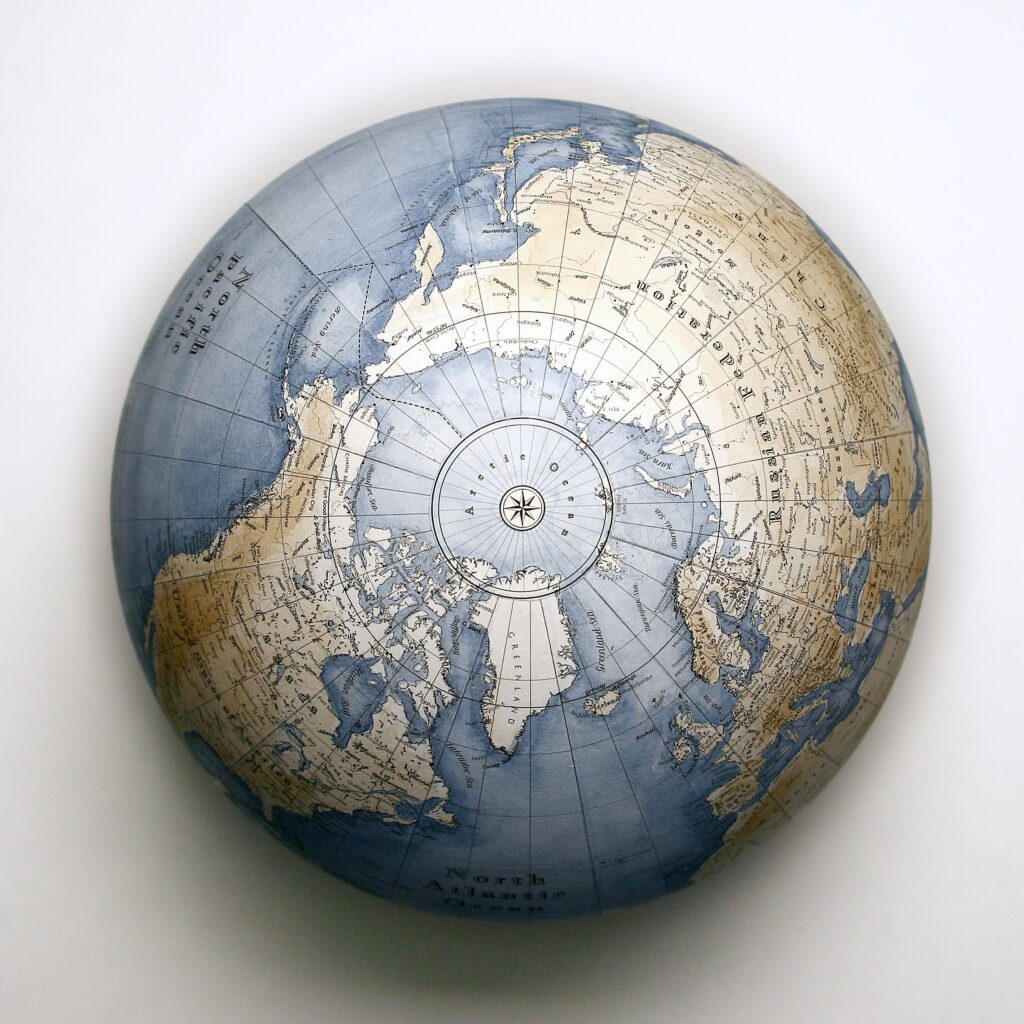A book that tells the story of the Earth that will exist a thousand years after Jules Verne's visionary book, Around the world in 80 days. It is the no less visionary one by Telmo Pievani and Mauro Varotto, who warns us of the future we do not want, made up of rising sea levels, climatic migrations, long-term effects of anthropic action.
by Flavio Natale

Which of the emerged lands will survive the erosion of the sea? Which will be submerged? How will the relationship between human beings and the territories they inhabit change? These and other questions to which the book answers, through a hypothetical trip around the globe Around the world in the Anthropocene (Raffaello Cortina publisher), written by Telmo Pievani, professor of Philosophy of Science at the University of Padua, and Mauro Varotto, professor of Geography at the same university, and illustrated by futuristic maps designed by Francesco Ferrarese.
“We imagined a flight around the Earth in 2872, which is a thousand years later Around the world in eighty days by Jules Verne. If all the efforts of this century to contain climate change prove to be in vain, we would see panoramas that are very different from the current ones” explained Telmo Pievani. “The hypothesis from which we started to redesign the planet, with a little imagination, is that of the melting of the polar caps, which according to some climatic models – not too pessimistic – would bring the level of the oceans to rise more than 60 meters. In this scenario the world would lose today's 15% landmass. And epochal changes would occur: desertification induced by climate change would cause migrations of hundreds of millions of people, states would aggressively compete for habitable and still arable lands, including new agricultural paradises such as thawed Siberia and Greenland, and remaining resources.
The book is divided into three distinct parts, or rather three "world tours". The first is the (hypothetical) one performed by Telmo Pievani who, following the wager of Phileas Fogg, the protagonist of Around the world in 80 days by Jules Verne, proposes a new tour (this time eight days) to ideally retrace the journey made by humanity, from Africa to Antarctica, which in 2872 could be the last continent able to offer satisfactory conditions to allow the survival of humanity. But that's not all: "In the book I hypothesize that Siberia, after the complete melting of the permafrost around 2200, will become the granary of the world, and will welcome 650 million immigrants from Asia and Africa to work in the countryside", added Pievani.
The second tour concerns instead the consequences of sea level rise: following the maps redesigned by Francesco Ferrarese, we find ourselves faced with the scientific hypothesis of an elevation of 65 metres, caused by the complete melting of the continental ice caps. This phenomenon would be generated both by the melting of the water contained in the ice caps and by the increase in temperature, responsible for the expansion of the water masses. The expected 65 meters are taken from some scientific forecasts, which in the various studies taken into consideration range from 30-40 meters up to 70. According to the book, the new sea level would lead to the loss of 23 million square kilometers of land, corresponding to the 15% of the current land extension.
In Europe to be hit hardest would be the Netherlands, destined for an almost total disappearance, and the Denmark, which would risk losing the 89% of its territory. But also there Great Britain and Germany would risk heavy soil erosion (31% the first, 30% the second), while Russia would have to give up the 18% of the territory, concentrated in the North Sea. Italy, on the other hand, would witness the almost complete disappearance of the Po Valley. Africa, on the other hand, would suffer the "minor" damage, seeing its portion of territory reduced by 4%, but would have to give up numerous nations on the western side, such as Gambia, Guinea Bissau and Senegal. In Asia they would disappear, in addition to the atolls and archipelagos of the Indian Ocean (such as the Maldives), too Singapore, Qatar, Bahrain and Bangladesh, for a loss of territory equal to 13% of the current total.
On the American front, however, the United States would lose the 11% of the territory (including all of Florida), while Central America and the Caribbean would suffer a halving of its surface area, with the disappearance of many islands - specifically, Mexico would lose an area equal to 300,000 square kilometers. In Oceania, small island states would suffer the worst consequences. South America would lose soil 10%, while New Zealand and Australia would lose 14% and 11% respectively. Even Antarctica, once the ice melts, would lose half of its surface, like Greenland.
The third "world tour", curated by Mauro Varotto, analyzes distant places and themes, chosen to represent, in their diversity, the intrinsic contradictions of the Anthropocene era. For example, Varotto has compared some urban emblems of opulence and well-being, such as New York, Paris, London, Berlin, Milan, St. Petersburg, San Francisco, Los Angeles, Singapore, Tokyo, and other cities forced to pay the price of this opulence, such as Atafona, Moynaq, Bidi Bidi, Dadaab, Handan, Shandong, Tar Heel, Binefar, Bantargebang and Agbogbloshie.
Between narrative, scientific and cartographic dimensions, the tour of the world in the Anthropocene therefore becomes a map which, drawn from the future that awaits us without decisive action, allows us to ensure that this future does not occur.
Published December 13 on Futura Network.






